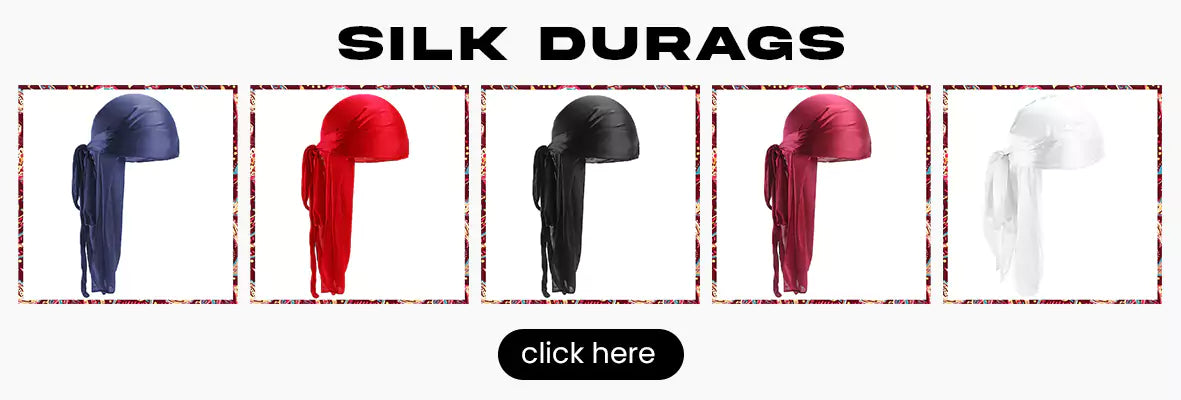If you wear a durag, you are likely aware of its benefits, such as creating waves and protecting your hair. However, have you ever considered the risks of wearing a durag too tight? The answer is yes, wearing a durag too tight can hurt your head and even cut off circulation.
When a durag is tied too tightly, it puts pressure on your head. This pressure can cause discomfort, pain, and even headaches. In severe cases, wearing a durag too tight can lead to circulation issues, such as cutting off blood flow to your head. This can cause dizziness, lightheadedness, and, in rare cases, fainting.
Finding the right fit when wearing a durag is essential to avoid these problems. A durag should be snug and comfortable without causing any pressure or pain. It should also not be too loose, as this can defeat its purpose of creating waves or protecting your hair.
So, while wearing a durag can be beneficial, it is vital to wear it correctly to avoid any potential health risks. In the following sections, we will explore the purpose of durags, the impact of wearing them too tight, and ways to avoid these issues. We will also explore the science behind durags and circulation to provide factual information.
Understanding Durags and Their Purpose
If you're a fan of waved hairstyles, you might have heard of a durag. Often made of silk or satin, these headpieces are worn to create and maintain waves in the hair. However, their purpose goes beyond fashion. Durags are also designed to protect hair from breakage and frizz, especially while sleeping.
To wear a durag, first brush your hair in the desired pattern. Then, place the durag on your head with the seam in the back. Take one tail and tie it tightly in the back, making sure it covers the entire head. Take the other tail and tie it on top of the first, creating a knot in the center of your head.
While durags are often associated with hip-hop culture, their history dates back to the early 19th century when slaves used them to protect their hair from the harsh sun and prevent it from getting caught in cotton gins. Today, durags come in various colors and patterns, making them a popular fashion statement.
If you want to try this trend, find a durag with a pattern you like. You can quickly tie it back with practice and create the perfect wave pattern.
Can a Durag Cut Off Circulation?
Wearing a durag may seem harmless, but wearing it too tight can harm your health. The pressure from a tightly worn durag can cause headaches and even cut off circulation to your head, leading to serious health problems.
The cause of this issue is simple: the tightness of the durag creates pressure on your head, which can compress arteries and nerves. The longer you wear it, the more severe the impact can be. It's essential to find the right fit to avoid these problems.
The potential health risks can vary and are not something to ignore. Tight durag can cause hair loss, scalp irritation, and dizziness. More severe consequences include cerebral ischemia, decreased blood supply to the brain, and subcutaneous emphysema, where air gets trapped under the skin.
Paying attention to how your durag feels on your head is essential. If you experience any discomfort, it's a sign that your durag is too tight, and you should adjust it immediately. Avoid wearing a durag that causes pain or discomfort to prevent potential health risks.
If you're concerned about the potential health risks associated with wearing a durag too tightly, educating yourself on the proper way to tie one is crucial. Our detailed guide on "How to Tie a Durag" offers step-by-step instructions and best practices to ensure you're looking stylish and safeguarding your health.
Ways to Avoid Tight Durag-related Issues
Wearing a durag can provide many benefits, but only if it fits properly. Finding a durag that fits your head snugly and comfortably without being too tight is important to avoid discomfort, pain, and circulation issues. Here are some tips to help you avoid tight durag-related issues:
- Avoid tying the durag too tight: When tying your durag, make sure to do so without pulling too tightly. The durag should fit snugly but not be constricting.
- Find the right fit: Durags come in different sizes, so it's important to find one that fits your head comfortably. Avoid ones that are too small or too big.
- Protect your head: Protect your head with a do-rag or thin scarf before putting on a drag to avoid irritation.
- Take breaks: If you wear your durag for extended periods, take it off and give your head a break to allow proper circulation.
- Avoid wearing durags too often: While durags can help create and maintain waves, it's important to give your hair and scalp a break from time to time to avoid issues like thinning hair or bald spots.
By following these tips, you can enjoy the benefits of wearing a durag without experiencing discomfort or circulation issues.

The Science Behind Durags and Circulation
Wearing a tight durag can disrupt this process by putting pressure on the blood vessels in your head and neck, reducing the amount of blood flowing through. This can lead to extreme symptoms, including headaches, dizziness, and fainting.
It's worth noting that circulation issues related to durags are more likely to occur in individuals who already have underlying health conditions, such as high blood pressure or heart disease. However, even those who are otherwise healthy should take care when wearing a durag to avoid potential problems.
Ultimately, understanding the science behind circulation and durags can help you make informed choices about how to wear them safely and comfortably. By choosing the right fit, avoiding excessive tightness, and protecting your head and neck, you can enjoy the benefits of a durag without risking your health.
Conclusion
In summary, wearing a durag too tight can negatively affect your head and circulation. The pressure and tightness caused by wearing a durag that's too small can lead to discomfort, pain, and even cut off your circulation. Finding the right fit for your durag is crucial to avoid these issues. Ensure it's not too tight but snug enough to stay in place. You can also try wearing a durag without tying it up too tightly at the back of your head. It's important to protect your head while wearing a durag. If you experience any discomfort or pain, removing the durag immediately is best to avoid any health risks.
Finally, understanding the science behind the impact of durags on circulation is essential to ensure you're not putting your health at risk. Don't fall for common misconceptions, and always seek factual information. Remember, wearing a durag can be a great way to create waves and protect your hair. With the right fit and proper usage, you can enjoy these benefits without causing harm to yourself. Stay safe and enjoy your durag!
FAQ
Q: Can wearing a durag too tight hurt your head or cut off circulation?
A: Yes, wearing a durag too tight can hurt your head and cause circulation issues. Tying a durag too tightly can increase pressure on your head and restrict blood flow, leading to discomfort and potential health risks.
Q: How should durags be worn and tied?
A: Durags are typically worn by tying them tightly around the head, covering the hair. To tie a durag, place it over your head with the flap at the back, then pull the strings around to the front and tie them in a knot or bow. This helps create wave patterns and protect your hair.
Q: What are the negative effects of wearing a durag too tight?
A: Wearing a durag too tight can increase pressure on your head, leading to discomfort, headaches, and potential circulation issues. It can also cause hair breakage and damage. It is important to find the right fit to avoid these issues.
Q: How can I avoid tight durag-related issues?
A: To avoid discomfort, pain, and circulation issues from wearing a durag, it is important to find the right fit. Choose a durag that is snug but not too tight. You can adjust the tightness by tying it securely but not overly restricting. It's also important to take breaks from wearing a durag to give your head and hair a chance to breathe and recover.
Q: Is there science behind the impact of durags on circulation?
A: There is science behind the potential impact of durags on circulation. When a durag is tied too tightly, it can increase pressure on the blood vessels in your head, potentially restricting blood flow. This can lead to discomfort and circulation-related issues. Understanding the relationship between tightness, pressure, and blood flow is important for maintaining optimal head health while wearing a durag.









